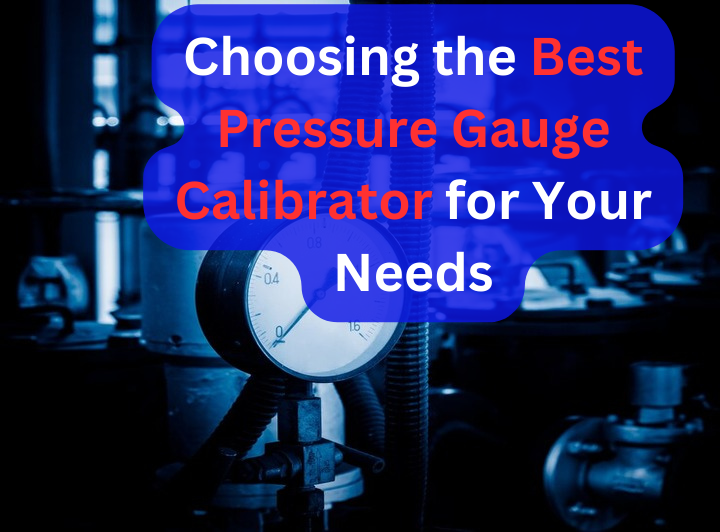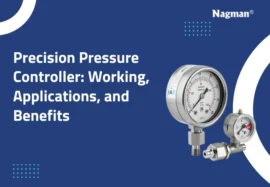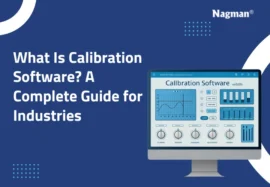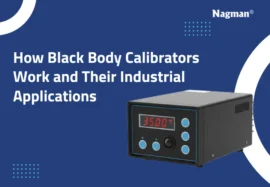Selecting the right pressure calibrator will ensure the pressure-measuring device gives precise and dependable readings. Whether it’s engineering, industrial production, or any other industry where accurate pressure readings are crucial, a good calibrator can help stay in line with regulations while also guaranteeing peak performance. This blog covers the importance of pressure calibrators, certain calibration considerations, and the best practices for choosing the right calibration device.
Why is Pressure Gauge Calibration Important?
Pressure gauges are essential in many settings, whether they are medical devices or industrial equipment. However, environmental influences, deterioration, or incorrect handling may make the instruments inaccurate. In such situations, pressure gauging tools ensure the accuracy of the instruments and keep them dependable by comparing their readings to a recognized calibration standard.
Frequent calibration has various advantages, such as:
- Ensuring adherence to rules and industry standards.
- Extending the equipment’s lifespan.
- Improving operational dependability and safety.
Important Calibration Considerations
Several calibration factors influence the choice of the calibrator.
Factors In Choosing The Right Calibrator
Understanding these will help you make an informed choice:
Range and Accuracy: Choose a calibrator that covers your equipment’s required pressure range while offering a high degree of accuracy. The calibrator’s performance should exceed the expected accuracy of the tested instrument.
Type of Pressure: Determine whether absolute, differential, or gauge pressure calibration is required. A specific calibrator design may be needed for each type.
Environmental Conditions: The operational circumstances in which the calibration will occur matter. Extreme temperatures, humidity, and even dust may reduce reading accuracy.
Standards Compliance: Adhering to ISO/IEC 17025 and other pressure gauge calibration standards ensures that the calibration process meets industry requirements.
Portability and Durability: Choose lightweight, portable calibrators for field work or on-site calibrations to withstand harsh conditions. Designs with protective casings are ideal for rough environments where wear and tear are common.
Calibration Speed: If you calibrate regularly, give the calibrator enough time to stabilize and complete a test. Faster calibration tools improve efficiency without compromising accuracy.
Selecting the Ideal Pressure Calibrator for Your Requirements
Determine Your Needs: Choose a calibrator that suits your needs. Think about the variety, precision, and range of pressure readings you frequently handle before buying a calibrator.
Research Reliable Brands: Buy from dependable companies known for quality. Such brands have credible reviews and certificates.
Opt for Versatility: Choose a calibrator that can handle a comfortable range of readings and applications, especially if you work with multiple pressure instruments.
Focus on Long-Term Value: Your ability to use the tool over a long term and ease of maintenance matter even with limited financial resources. Even if the upfront cost is higher, the need to repair frequently can be avoided.
Seek Expert Advice: Experts can help determine the best pressure gauge calibration standard, depending on your unique operational environment.
Best Practices for Calibration
Plan Frequent Inspections: Set up a regular calibration program.
Maintain Detailed Records: Ensure precise instructions to keep thorough records of all calibration-related activities, including calibration readings, equipment specifications, and any modifications done.
Provide Specialized Training: Make sure that the staff members receive thorough training on using calibrators and analysing data.
Make use of the Certified Reference Standards: Always use certified reference standards or master instruments adhering to the accepted calibration standards, such as ISO/IEC 17025.
Let Instruments Warm Up: Give the pressure calibrator and the equipment being tested (EUT) time to stabilise before calibrating. The instruments work at their best during this warm-up, increasing the accuracy of the findings.
Manage the environmental elements: Conduct calibration in a stable, controlled environment to minimise fluctuations in temperature, humidity, and pressure. Avoid sources of dust, vibrations, or magnetic fields, as these can interfere with readings and compromise the accuracy of the calibration.
Conclusion
To choose the best calibrator, know the tool’s intended use, follow the calibration instructions, and make sure that required calibration factors are kept in mind and standards are being met. Efficiency can be improved while adhering to safety regulations and selecting the appropriate instrument based on the calibration factors.
The integrity of pressure-measuring techniques can be maintained while calibrating for both industrial and precision machinery with the appropriate tools and methods. The easiest approach to guarantee accurate calibration is to spend money on a reliable pressure gauge calibrator!






